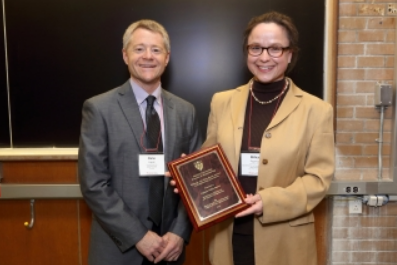Winners of the 2014-2015 William and Rhea Seath Awards Competition

Professor Damiano Pasini, Mechanical Engineering, Dr. Sajad Arabnejad, Mechanical Engineering, Dr. Michael Tanzer, MD, Department of Surgery, and Burnett Johnston, Mechanical Engineering for their “Fully Porous Hip Replacement Implant Capable of Eliminating Bone Resorption” project.
Executive summary:
Their novel implant uses a fully porous structural biomaterial that avoids bone resorption by seamlessly matching the properties of the local host bone tissue. In addition, the new design can be adopted with no modifications to existing surgical technique and hospital infrastructure. Existing hip replacement procedures often require follow-up surgery that can increase the risk of complications and even death. Current hip implants in the market are incapable of preventing long-term stress-related bone loss, which is a risk factor for the success of revision hip surgery. The award is contributing to the cost of the animal studies.

Professor Milica Popovic, Electrical and Computer Engineering, for her “Early Breast Cancer Screening with Low-Power Microwaves” project.
Executive summary:
It is under further development promises inexpensive, comfortable and safe monitoring of breast tissue and early detection of malign lesions. Detection of early stage breast tumors is critically important. Each of the current modalities, such as mammography, ultrasound and MRI, has downsides, often resulting in late tumor detection and, consequently, a lower success rate in post‐surgical treatment. Low‐power microwave‐based screening is an emerging field that promises inexpensive, comfortable and safe monitoring of breast tissue, to enable early detection of malignant lesions. The McGill research team is among only a few in the world that has evaluated the underlying technology (ultra-wide-band (UWB) microwave detection) for monitoring breast tissue in human subjects. The award is providing funds to help build a more compact and portable second-generation prototype for use in ongoing feasibility studies.
